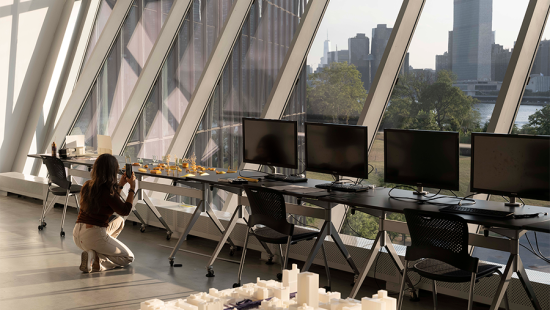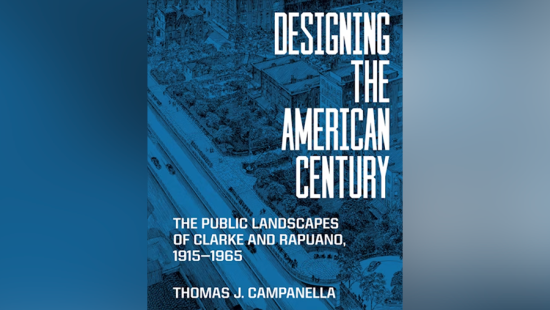The tour is an outgrowth of ongoing work by City and Regional Planning Associate Professor Jennifer Minner and researchers in her Just Places Lab. Since 2020, they have been working, alongside colleagues in the Circular Construction Lab led by Architecture Assistant Professor Felix Heisel and community leaders in the Circularity, Reuse, and Zero Waste Development (CR0WD) network, to engage the public locally and throughout New York State to foster more circular, regenerative, and sustainable construction practices. From policy guides to presentations and exhibitions, Minner seeks to help the public "see" this issue and rethink the ways in which waste is created through demolition. Instead, striving to illustrate the power of conserving embodied carbon through methods such as preservation, adaptive reuse, deconstruction, and building material reuse.
Remaking the Built Environment by Reimagining Waste
CRP Associate Professor Jennifer Minner and the Just Places Lab team at Cornell AAP map local sites demonstrating the challenges of creating circular construction economies and the opportunities there are in reusing building materials.

The Waste(d) Imagination Tour is available through the PocketSights smartphone app. image / Molly Sheridan
Visitors to the pedestrian mall in the heart of downtown Ithaca, New York, may find themselves passing a large poster with directions to the Waste(d) Imagination Tour. Following a QR code leads the curious to the PocketSights smartphone app which showcases a wide variety of user-built self-guided walking tours. In this particular case, rather than digging into local literary history or neighborhood highlights, users are invited to contemplate greater sustainability in the built environment by visiting 21 (so far) key site examples spread across town.
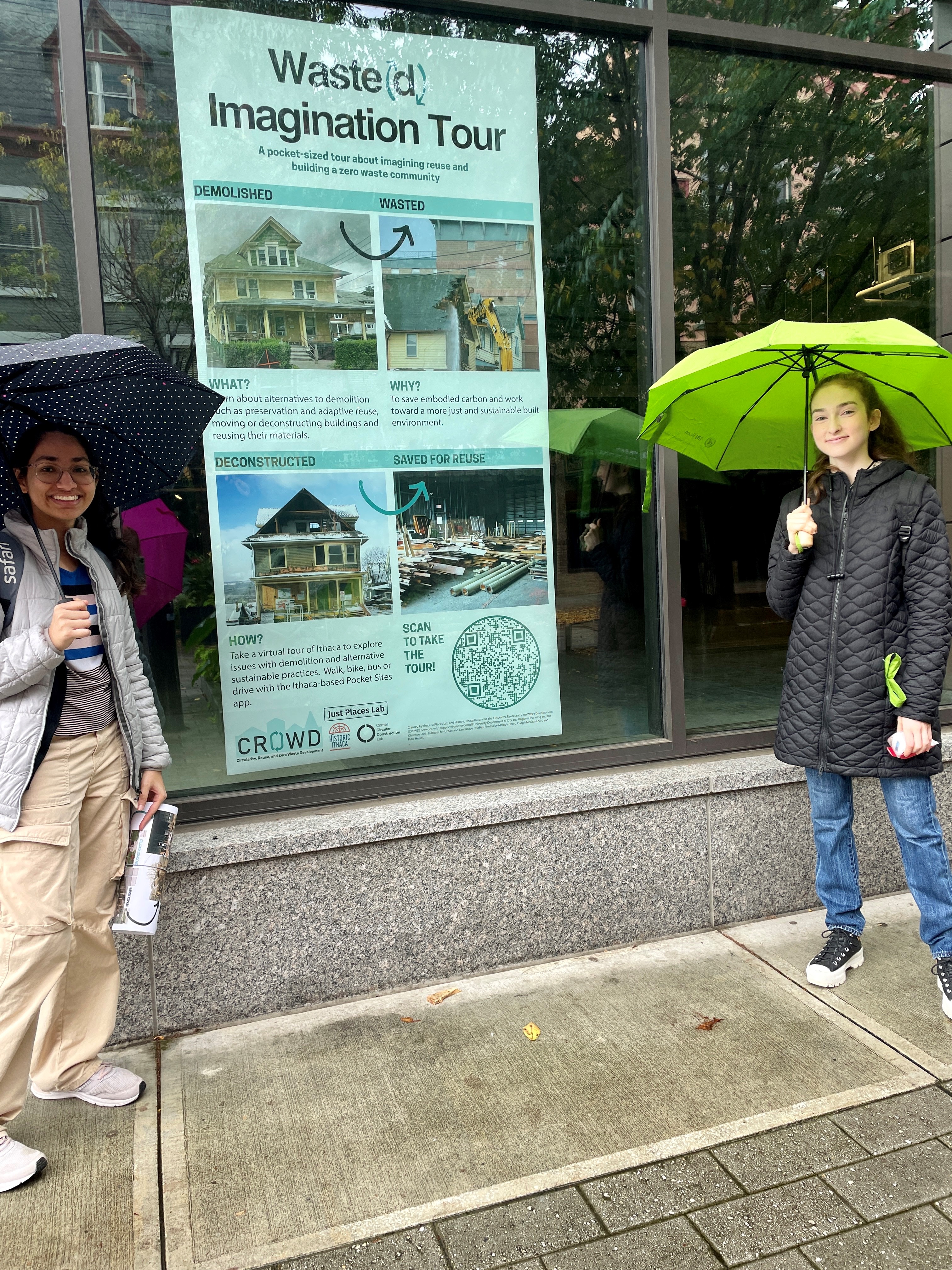
Medha Kulkarni and Chloe Long (both M.R.P. '25) mount a poster in a Harolds Square storefront space on The Commons in Ithaca, New York. image / provided


"As Gretchen Worth (M.A. HPP '20) from the Susan Christopherson Center for Community Planning and CR0WD often points out, many people know that plastic bags are bad and that we should compost food, but for some reason, few people realize the massive issues with demolition or the alternatives to demolition that they can advocate for in their community," Minner explains, pointing specifically to the burden construction and demolition debris places on landfills. The Waste(d) Imagination experience presents an opportunity to lead people through the opportunities and challenges of creating a more circular construction economy in Ithaca.
The tour, which takes about five hours and thirteen miles of walking or cycling to complete in full, introduces participants to stunning examples of preserved landmark buildings the adaptive reuse of existing facilities into residential, educational, and retail spaces; the exciting potential of deconstruction and resale of building materials; and the true cost-benefit of outright demolition. Users are welcome to skip around and delve into each site as deeply as their interests carry them. A brief summary is provided for each with additional resources including videos offering additional background.

Press Bay Alley, 118 West Green Street: A series of retail and dining spaces housed in a converted row of former storage bays generate a dynamic consumer experience.
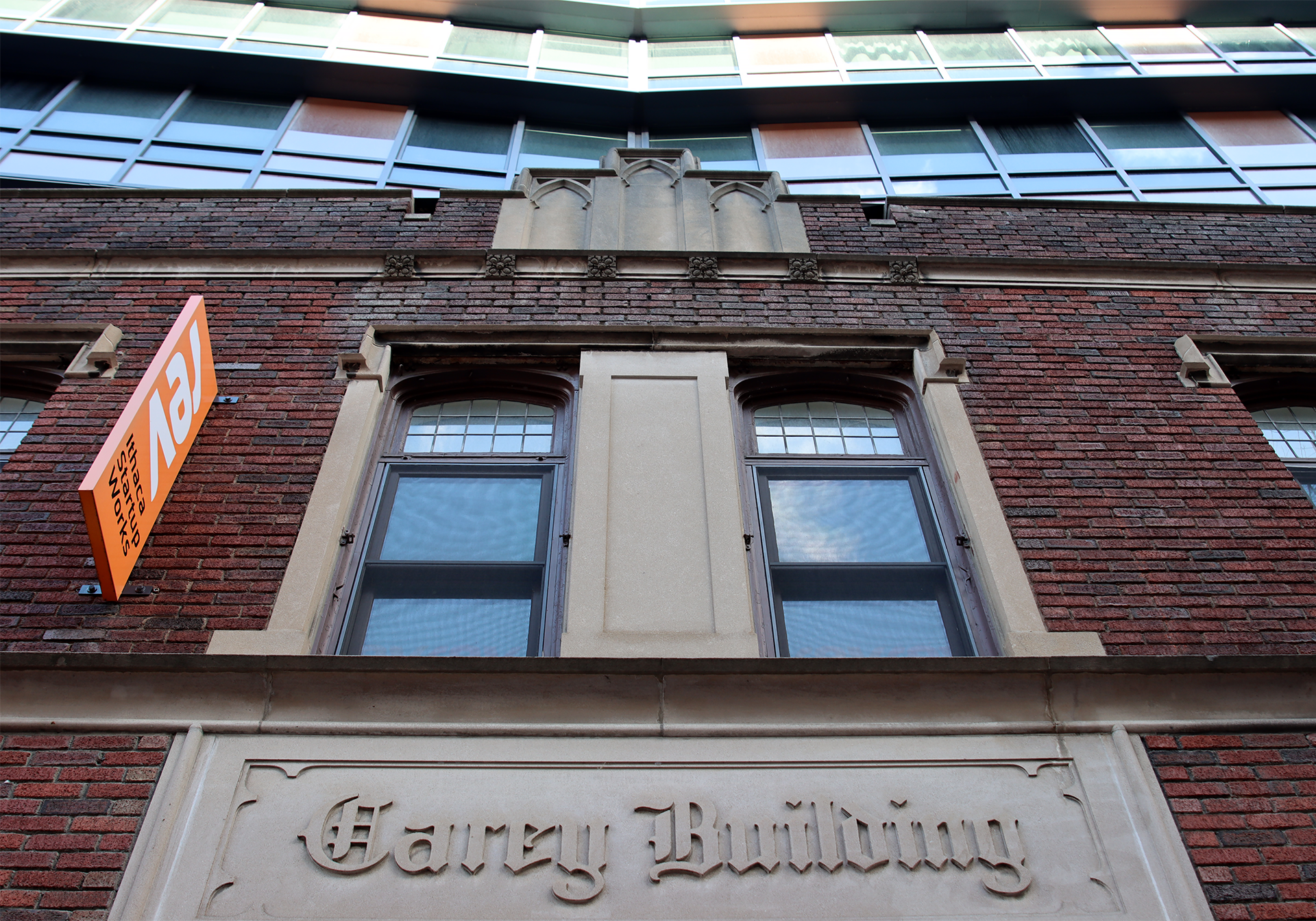
The Carey Building, 314 East State Street: An example of vertical expansion, or overbuilding, above an existing 1920s-era building.

The Boardman House, 120 East Buffalo Street: Threatened with demolition in 1968 by Tompkins County, community action resulted in its purchase and rehabilitation for office use. In a way, history repeated itself at this site!

Clinton House, 116 North Cayuga Street: Nearly demolished in 1973 to make way for a Holiday Inn, the property was purchased by Historic Ithaca and preserved.
"It continually shocks me to think about how far we (as a founding partner in CR0WD) have come in organizing around alternatives to demolition in Ithaca, but we still have a long way to go policy-wise. The tour is just one outcome of a series of collaborative projects in which I have discovered just how important collective action is for rethinking the way we plan, design, preserve, repair, and construct cities. I am still so hopeful that we will begin to craft real change together."
The concept for how to best present these ideas to the public went through many iterations during its two-year development. Wyeth Augustine-Marceil (M.R.P. '23) took the lead in determining the PocketSights format, then collaborated with Ketaki Ghodke (M.R.P. '24), Jeff Iovannone (M.A. HPP '23), and Charles Zhang (M.R.P. '24) to create the initial content. Susan Holland and Christine O’Malley of Historic Ithaca provided additional materials and Medha Kulkarni and Chloe Long (both M.R.P. '25) further expanded it under Minner's guidance. Some entries were written by students in Minner's course Land Use and Spatial Planning Methods.
Minner has also incorporated the tour into her classes. Undergraduate students enrolled in Promise and Pitfalls of Contemporary Planning tested out a part of the tour with Minner and O'Malley this fall. Students heard firsthand about the founding of CR0WD as well as the Catherine Street Commons Deconstruction project, a massive demonstration of deconstruction and community salvage. They later visited Southworks and heard about the potential for preservation and adaptive reuse writ large on the 95-acre former industrial facility.
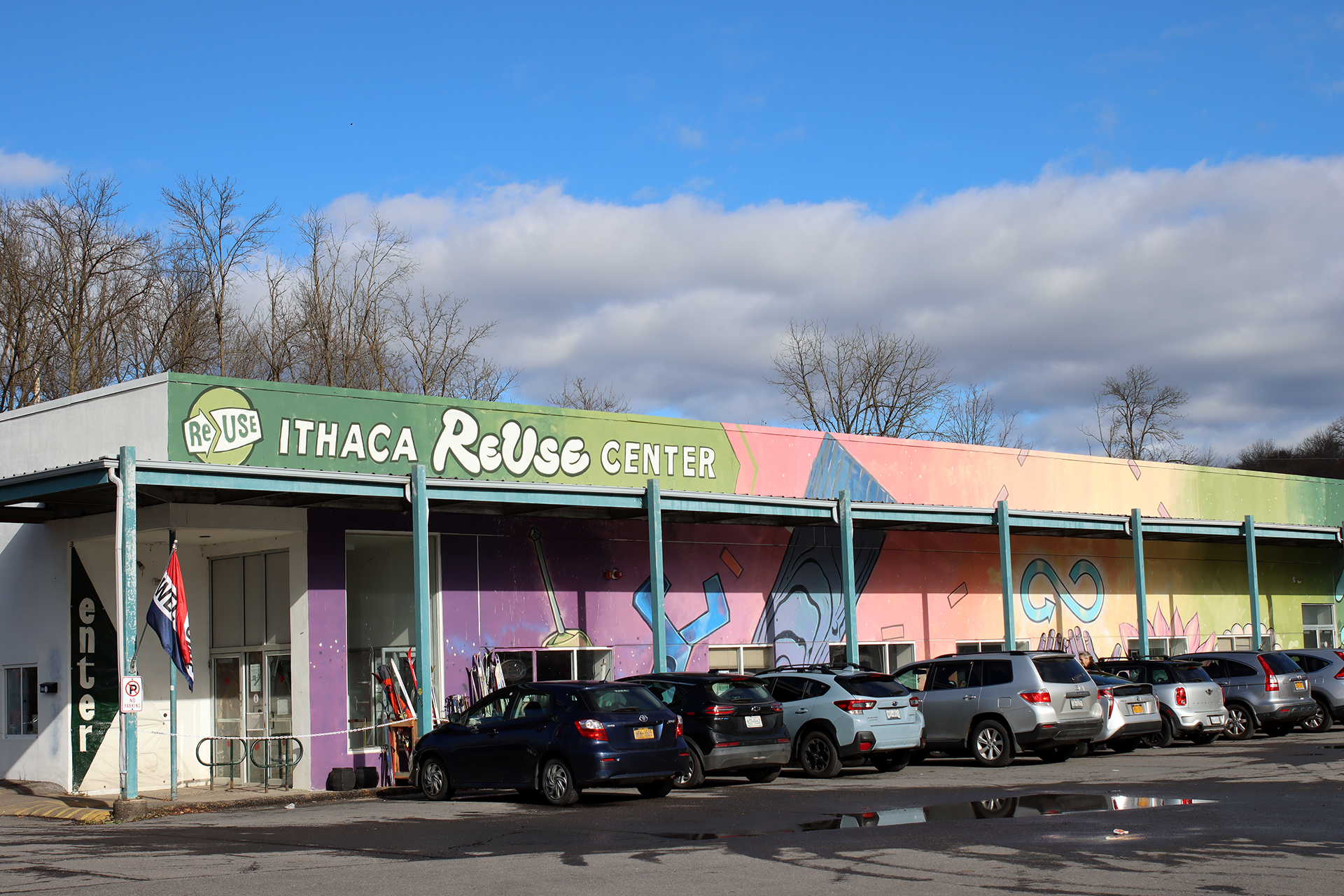
Finger Lakes ReUse Center, 214 Elmira Road: In addition to the resale of clothing and household goods, the center has become a local hub for deconstructed and reusable building materials. Finger Lakes ReUse is a founding partner of the Circularity, Reuse, and Zero Waste Development (CRoWD) network.

McDonald's, 372 Elmira Road: After renovation was briefly considered, the building was demolished and rebuilt on the same lot in 2017. The new structure replaced one of the oldest McDonald's restaurants in New York State. Brian Toy (M.R.P. '21) researched and wrote about the lost opportunity for reuse.
As a small college town, Ithaca struggles with the same housing and affordability issues that other communities are facing, and recent proposed and executed demolitions highlight both the loss of history and the community's willingness to protest, protect, and find other solutions. In many ways, Minner finds that Ithaca "really punches above its weight" in this way, so she remains optimistic that movement toward even greater support of preservation and reuse will continue. "For people interested in advocating for change in other cities, we hope that the tour offers an example that might be replicated in other communities. I think there is a lot of power in bringing together faculty, students, and community leaders to share the topography of circularity."





